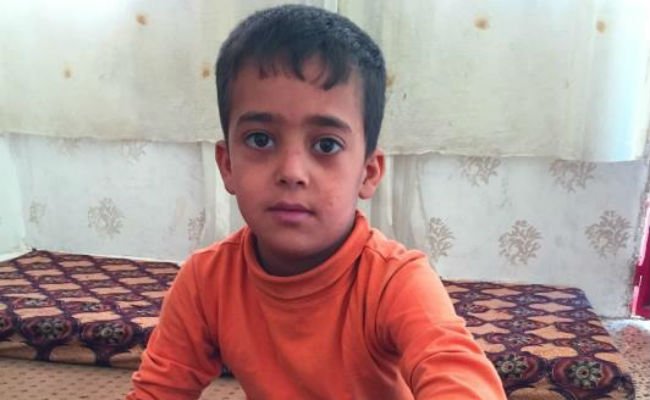This war has lasted five years too long.
As the rippling effect of devastation spreads into Syria’s neighboring countries hosting refugees, the world watches hopelessly. The complex situation calls for comprehensive solutions, and current efforts are still struggling to make a difference. I was interested in learning all that I could to help the refugee crisis, and the best way I knew how was to see it for myself.
From Amman, Jordan, I travelled to a series of small villages near the border with Syria, and visited a number of Syrian families who were sheltering in very bare one- or two-room, sparsely-furnished housing. The first of many people I met and talked to was a 27-year-old mom to four kids, all under the age of eight. She was completely alone. She and her husband had fled their destroyed home in southern Syria a few years ago, but her husband had travelled back into Syria eight months prior, and has not been seen or heard from since. The children’s grandmother, deaf in one ear from a missile explosion, sat next to her and they told me the story of their village. It had been bombed a little over a year ago, and the entire extended family was forced to flee across the border. She does not know when, or if, she will ever be able to go back.
The family survives financially on small cash handouts from a Swiss-based charity, which they explained to me had already been spent on rent for a two-bedroom block house, with no furniture, and tattered fabric over the windows. With no money remaining for food, or for proper medical care, they were completely stuck. Although the majority of the refugees in Jordan are in camps, those who have entered legally are allowed to settle in villages outside the camps. But they are trapped in a country unfamiliar to them, stranded and relying on handouts for help.

These men, women, and children are warriors to me. As they frantically seek shelter to escape the dilapidated state of their homeland, the chaos has left families homeless, jobless, and essentially penniless. While I think Jordan has done a good job accommodating the evacuees, these already vulnerable host communities are now being forced to spread their resources even thinner, leaving very little for the Syrian refugees and creating tensions between Jordanians and Syrians.
As a result, well-trained, previously middle-class Syrian men sit around all day, frustrated that they are not allowed to be employed. With no work available to them, families become impoverished, with an estimated 86% of refugees now living below the poverty line of USD $3 per day. The situation has been growing grimmer as food aid is cut due to aid budgets running out and the fact that people now have to pay for what used to be free government medical services.
Syrian children were inside playing in the houses, but I saw very few of them carrying books or wearing school uniforms. I was told there simply wasn’t enough room for them at the local primary schools, but some went to school at night, where they would be taught by Syrian teachers. The kids spoke of bullying and being frightened to walk to school on their own through the villages. With a lack of educational opportunities, and no work, these families are not only facing immediate challenges, but also long-term obstacles that could leave them vulnerable and poor into the next generation.
The majority of current relief programs are not designed to treat a crisis of this size, or duration. Funding is running out, and the ripple effects are continuing to expand into Europe. Because these refugees have nowhere to go, the current relief funds quickly become temporary and unsustainable.
As I sat outside of a small, cement block house in that dusty hot Jordanian village, I thought, what do these people really need? The opportunity to put their skills to work and create dignity. Medical services that could act as a mobile clinic. A bus service that could get school children to and from their homes. Speed Schools could be implemented to help kids catch up after years of falling behind, and help them continue their education. Jordanian businesses could be started using Syrian skilled workers paid with incentives to provide much needed services to the burgeoning refugee population and benefit the host population at the same time.
These ideas went on and on. What became apparent was that although this is clearly a massive emergency, it threatens to be so long term that we need to apply more sustainable long-term development thinking to it. We can’t just rely on emergency relief thinking, cash, and food handouts, however necessary they are.
As my travels took me throughout the Middle East, I met with many philanthropists and foundations that are expressing the need to do something that is impactful and effective. I decided that we needed to create a pooled philanthropic fund that would allow private donors to come together and fund innovative, sustainable, grassroots initiatives that are focused on helping Syrian refugees in Jordan, Lebanon, and other neighboring countries.
Our thoughts for the fund are still taking shape, and we’d like to find donors that want to be a part of a unique and highly-effective solution. I know that together, we can do something to bring relief to the growing number of Syrians that are being displaced, and to the communities that are doing their best to accommodate them.
To learn more or to share your thoughts, please contact me at Geneva Global.
This article was written by Doug Balfour, CEO of Geneva Global in support of Geneva Global.